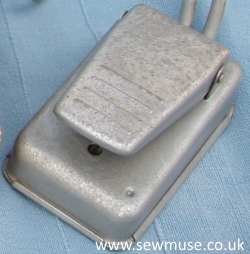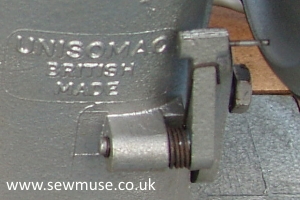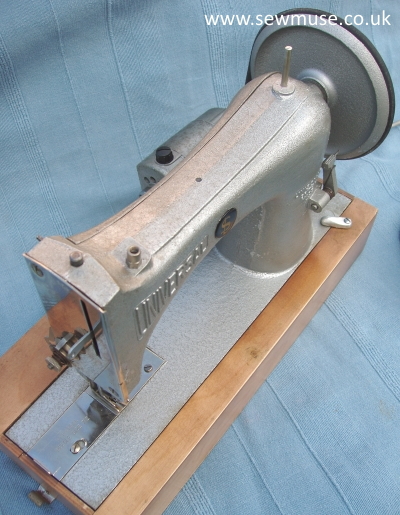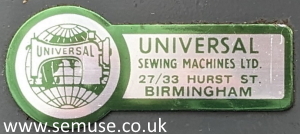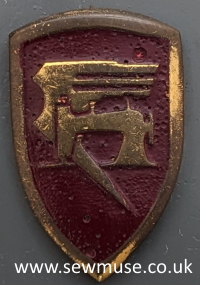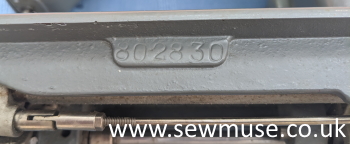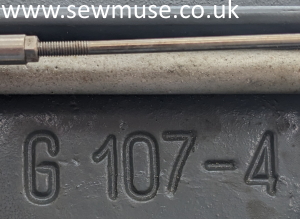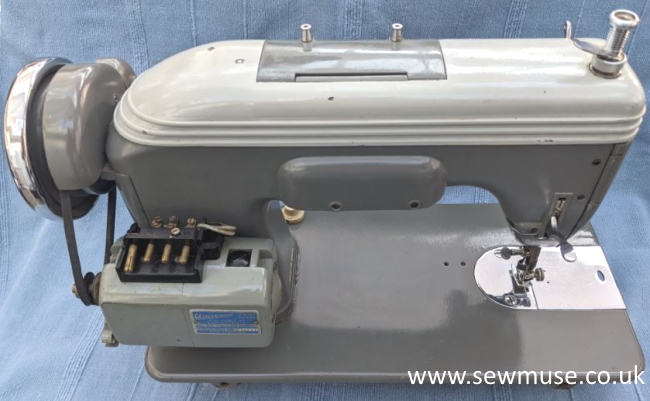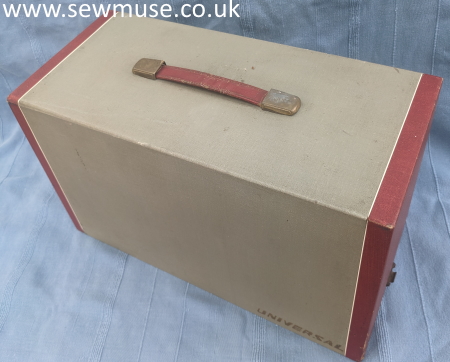Universal Sewing Machines Ltd was formed in early 1954 and by April was selling "shop soiled" Tailor-Bird machines. In the following year it advertised for Tailor-Bird machines "working or not" which it re manufactured adding an electric motor and plywood base which it claimed were equal to new.
The company started manufacturing new machines based on the Tayor Bird design but without the folding case in late 1957 at the company's factory, offices and showroom 27 - 33 Hurst Street, Birmingham where some 300 employees produced 35,000 machines a year.
The SL model was produced in 1958/9 then in late 1959 the company further refined the design releasing the SewMaid which has more angular castings, simple bobbin winder and using a plastic shuttle. This machine continued to be produced until around mid 1963 after which the company started heavily discounting the machine and offering free gifts presumably to clear its stock of machines but it was still available in November 1965.
In May 1962 it was announced that due to demand and lack of suitable premises in Birmingham it was outsourcing production of sewing machines to a company in Manchester (most probably Jones) although the showroom and offices remained in Birmingham.
The company also sold a number of labelled machines with names such as: the Consort 1957/58 made in Italy, the Zephyr made by BSM in 1954/56 and in 1963/64 by Jones, Zepher de Luxe Zig Zag 1963/64, three models of the Viceroy with the Model H being made in Spain in 1959 - 61 the Cavalier Free Arm 1965, the Sewglyde made in Spain, Britannic Type 3a made by BSM, Regal, Royal, Commodore and Majestic.
In addition to sewing machines the company sold knitting machines including the Rapidex, the Universal Autowash - a twin tub washing machine. These were heavily promoted at discounted prices in National Newspapers such as the The People and the Daily & Sunday Mirror as well as being advertising on television.
The company had over 15 branches across Great Britain as well as subsidiaries in South Africa and Europe.
See also Tailor Bird Sewing Machine Co.
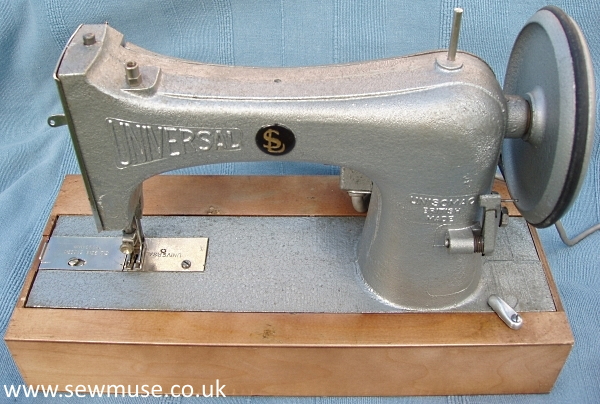
Universal SL Serial No. E4035.
This Universal machine is badged SL and so was made in 1958/9. It features the same basic layout of the Tailor Bird including the same walking foot mechanism, slide plates and almost identical shuttle but has a electric motor and foot pedal.
The body is cast aluminium with Universal cast into the Arm and Unisomac British Made on the pillar. The castings are quite rough and are overpainted silver giving a quite stylish effect.
The 1/15th HP electric motor made by the company is mounted to the rear of the pillar. It drives a large flywheel and is controlled by a neat metal foot-pedal.
The machine has two prongs and thumb catch which hold it into the thin plywood base. The cover is hardboard with a thick decorative card outer and reinforced at the corners. It's held in place with two latches.
The machines heritage can be clearly seen the slide-plates and style of bobbin winder are classic Tailor Bird features.
Viceroy Model H Serial No.802830.
This machine was made in Elgoibar, Spain in 1959 by Sigma and imported by Universal Sewing Machines which sold it as the Viceroy Model H.
The company fitted a plywood base and case made in England and mounted its own 1/15th electric motor to the rear of the pillar to drive a small flywheel controlled by a foot pedal which was possibly made by Jones.
The body is steel and the castings are quite rough, with machining visible on the bed. This one is finished in two tone grey rather than the more common two tone green.
The top cover (light grey) is removable & features an unusual lidded compartment - which is the concealed cotton reel holder.
It has Viceroy on the arm and Made in Spain at the base of the pillar under the arm. The standard logo for Universal Sewing Machines Ltd is positioned below the stitch length adjuster
The machine can sew both forwards and backwards. In addition the feed teeth can be raised or lowered for darning and embroidery using the Patchomatic. This device is at the left hand end of the machine.
It has Sigma's badge of a shield with a stylized lady "flying" through a sewing machine attached to the nose. This badge also appears in several photos in the manual.
The Serial number is under the front edge of the machine and there is an additional number cast under the bed.
The rear view shows the Universal motor, the cover for the plug was damaged in transit along with the plywood base which will need to be replaced.
The bulge in the arm is the built in light.
The Patchomatic is on the top casing far right of the photograph.
The grey and red cover is plywood with a textured covering. It has universal in gold in the bottom right hand corner and is held in place on the base with two latches

